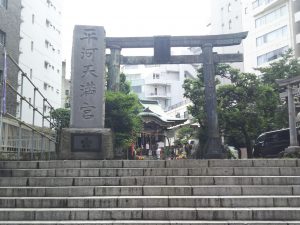 Out of all of the Tenmangu Shrines, the Hirakawa Tenmangu lies closest to the Imperial Palace. Its location helps it to attract many visitors, especially people who came to visit the palace and gardens. It is extremely common for people to come to the surrounding areas and run a course around the palace. The grounds are even popular at night, since there is a gorgeous view of Tokyo’s lights and the Tokyo Tower. The Imperial Gardens somewhat resemble New York City’s Central Park as it is a large plot of nature squeezed within a huge, bustling city.
Out of all of the Tenmangu Shrines, the Hirakawa Tenmangu lies closest to the Imperial Palace. Its location helps it to attract many visitors, especially people who came to visit the palace and gardens. It is extremely common for people to come to the surrounding areas and run a course around the palace. The grounds are even popular at night, since there is a gorgeous view of Tokyo’s lights and the Tokyo Tower. The Imperial Gardens somewhat resemble New York City’s Central Park as it is a large plot of nature squeezed within a huge, bustling city.
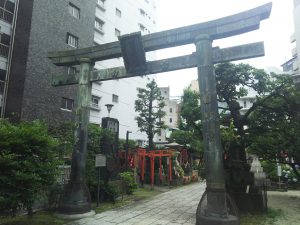 The Hirakawa Tenmangu Shrine comes from the lord of a castle called the Edo Hirakawa. The lord had a dream one night about Sugawara Michizane, the famous Chinese scholar and poet. The next morning, the lord received a gift. The gift was a picture that had been drawn by Sugawara Michizane himself. The lord took this as a sign and determined to build the Tenmangu Shrine within the North side of the Edo Hirakawa Castle grounds in the year 1478. The lord had plots of ume trees planted around the shrine because he knew that Sugawara Michizane loves the trees and their smell. All of Japan knows that Sugawara Michizane loved ume trees due to a poem that he wrote that is very famous and popular across the country. This is that poem:
The Hirakawa Tenmangu Shrine comes from the lord of a castle called the Edo Hirakawa. The lord had a dream one night about Sugawara Michizane, the famous Chinese scholar and poet. The next morning, the lord received a gift. The gift was a picture that had been drawn by Sugawara Michizane himself. The lord took this as a sign and determined to build the Tenmangu Shrine within the North side of the Edo Hirakawa Castle grounds in the year 1478. The lord had plots of ume trees planted around the shrine because he knew that Sugawara Michizane loves the trees and their smell. All of Japan knows that Sugawara Michizane loved ume trees due to a poem that he wrote that is very famous and popular across the country. This is that poem:
“東風吹かば、匂いおこせよ、梅の花、主無しとて、春を忘るな”
(kochi fukaba / nioi okose yo / ume no hana / aruji nashi tote / haru o wasuru na)
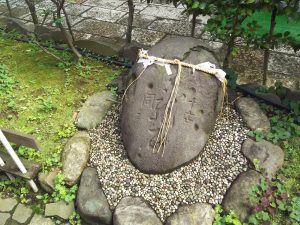 When the spring wind blows,
When the spring wind blows,
Send me your scent on the wind.
My dear ume blossoms,
Never forget spring.
Even without your master.
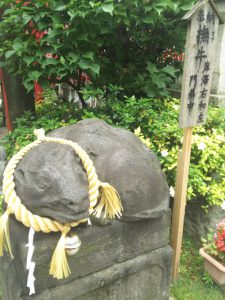
The Hirakawa Tenmangu Shrine holds a stone called “Chikaraishi.” The word “chikara” means “power” and the word “ishi” means “stone.” The stone is very famous among young people who would come to the shrine to gain power from it. However, nowadays the stone has been admitted as an important cultural property (designated by the local government) and therefore the public can no longer access it.
The shrine also holds a statue of a cow called the “Nade-ushi,” or “rubbing cow.” This statue is said to contain healing powers. It is legend that if you rub the cow on the same part of its body that you have illness, then your illness will be cured. Many Japanese people will recommend a visit to this shrine to anyone with a disease.
Overall, the Hirakawa Tenmangu Shrine is a very important shrine to Japanese culture and history and therefore should not be missed. This shrine is a convenient place to reach while exploring the Imperial Gardens and Palace.
| Name | Hirakawa Tenmangu(shrine) |
|---|---|
| Japanese name | 平河八幡宮 |
| Kami( ?) | Sugawara no Michizane(菅原道真公) Hondawake no Mikoto(誉田別命) Tokugawa Ieyasu(徳川家康) |
| Address | 1-7-5,Hirakawacho,Chiyoda-ku,Tokyo |
| Direction | The Tokyo metro Hanzomon Line at Hanzomon |
| Price | |
| Hours | |
| Event | |
| Goshuin(?) | |
| Website | http://hirakawatenjin.or.jp/ |
| Other |
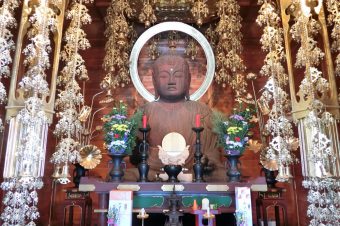
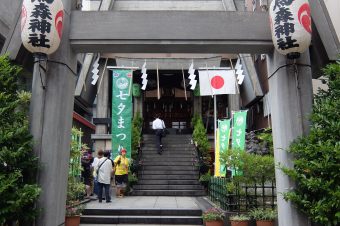
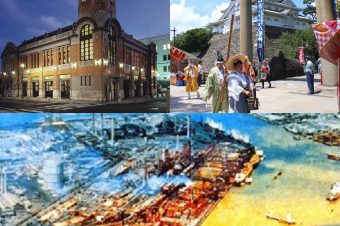
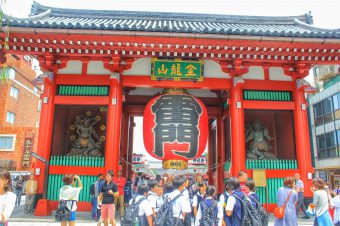
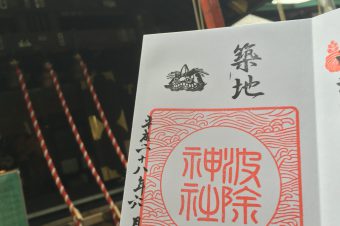
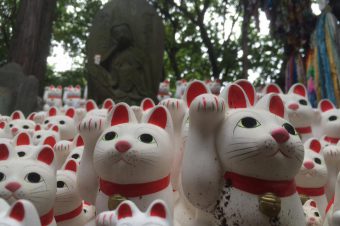
One Response
Revered Animals at Japan’s Temples & Shrines – Sanpai Japan
[…] Read full story: sanpai-japan.com […]